The Baltimore Oriole, a common backyard bird in Massachusetts, adds dazzling color to its environment. These birds thrive well anywhere there are tall trees and open spaces meet; small deciduous stands, open woodlands, farms, and our backyards make great homes for these colorful migrants. There are nine oriole species in the United States, and Baltimore Orioles are the most common oriole east of the Great Plains. Their range extends from southern Canada during the breeding season, south to northern South America for the winter.
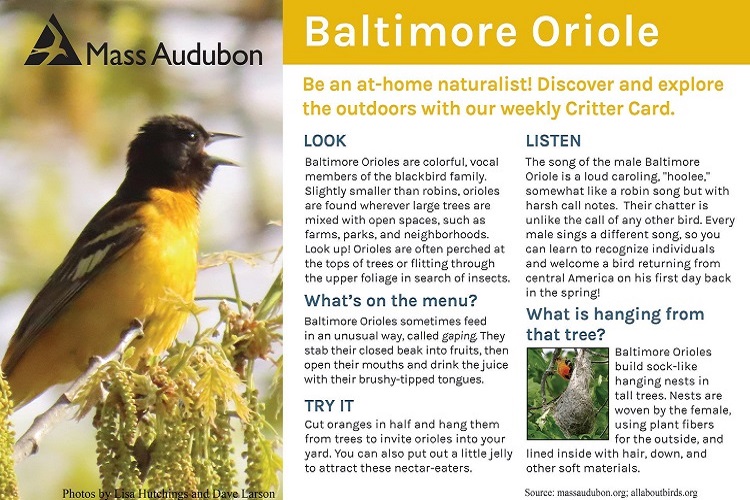
Baltimore Oriole and Bullock’s Oriole used to be considered the same species, under the name Northern Oriole, due to interspecies breeding. Genetic testing, and a close attention to detail,showed that these two orioles were indeed separate species. They do hybridize where their ranges overlap in the Great Plains.
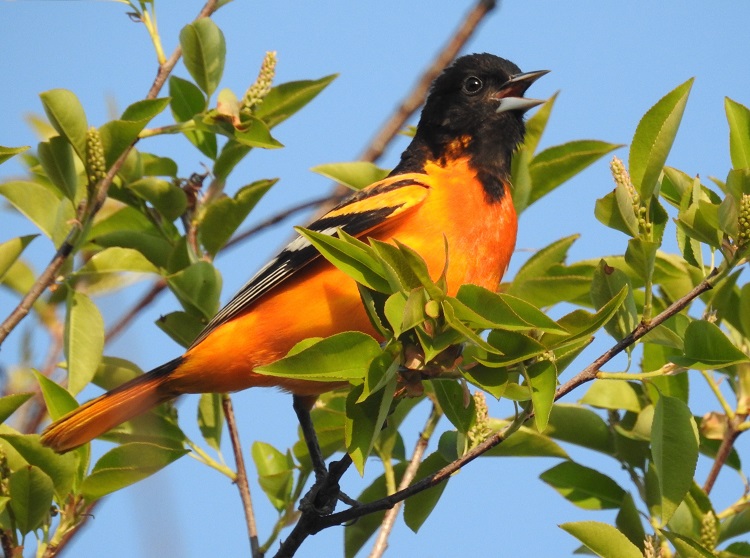
As omnivores, orioles can be observed eating insects, fruits, berries, and nectar. That may sound like a lot, but they can be rather picky eaters. When it comes to fruits, orioles will eat only the ripest, darkest fruits. They pick the deepest colored cherries, richest raspberries, and darkest mulberries they can find. Fruits that are naturally lighter colored, such as green grapes or yellow-colored cherries, will be ignored by orioles, even when fully ripe. Nothing, however, seems to rival orioles’ attraction to the color orange. Oranges themselves are a sure-fire way to lure Baltimore Orioles to your backyard. Don’t wait though – you want these naturally sugary options out before May 1st to entice orioles to stay! If you put out your feeders later, they may have found other places to reside.
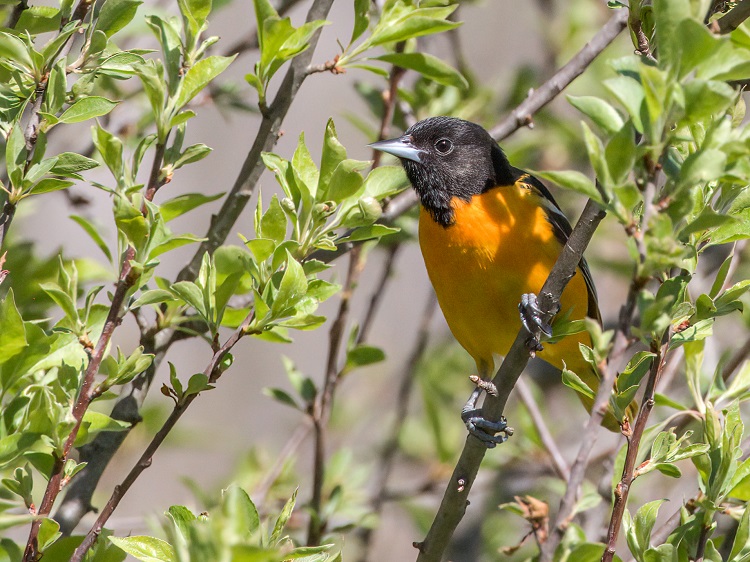
In the summer it’s common to find orioles at the oranges and berries we provide in our backyards, but they really focus their attention on insects. This high protein food is exactly what they need during the nesting season when they have extra mouths to feed. Orioles eat a great variety of insects, but what’s unusual is their taste for hairy caterpillars that most other birds avoid. Gypsy moths, tent caterpillars, and webworms are all considered pests to us, which makes orioles a great bird to have around! Fruits and nectars still supplement their diet, and in spring and fall become extremely important. The sugar in these foods is converted to fat, which in turn is used as fuel for orioles’ lengthy migration. Feeding orioles does bring up a concern about jellies as a feeding option. Orioles eat fruits that range from about 12% to 30% sugar. Jellies, on the other hand, are often over 50% sugar. Hence, we don’t recommend putting a lot of jelly out. It likely won’t hurt the birds if they dip their beaks in for some dessert but try fresh fruits first!
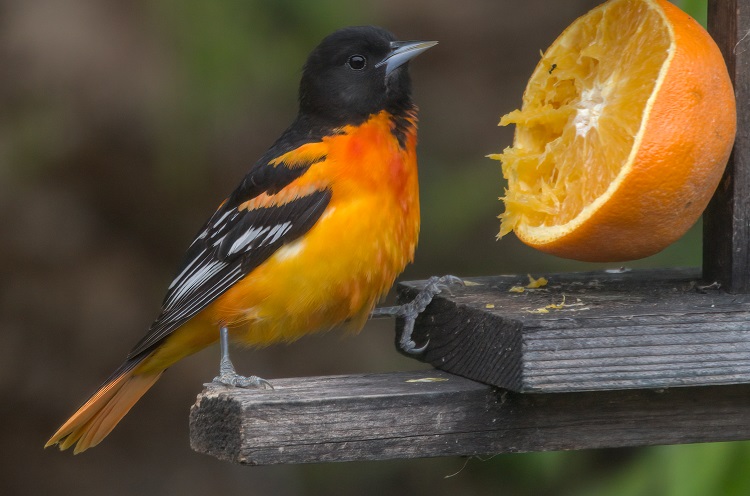
Female Baltimore Orioles are not usually as brightly colored as the males, although they do have a range of color variation. With each molt, however, their feathers come back even brighter; the oldest females may look almost like males, bright orange and black. Males, on the other hand, will consistently have orange undersides and rumps, with a black hood and back.

Female Baltimore Oriole with light head – Dave Larson 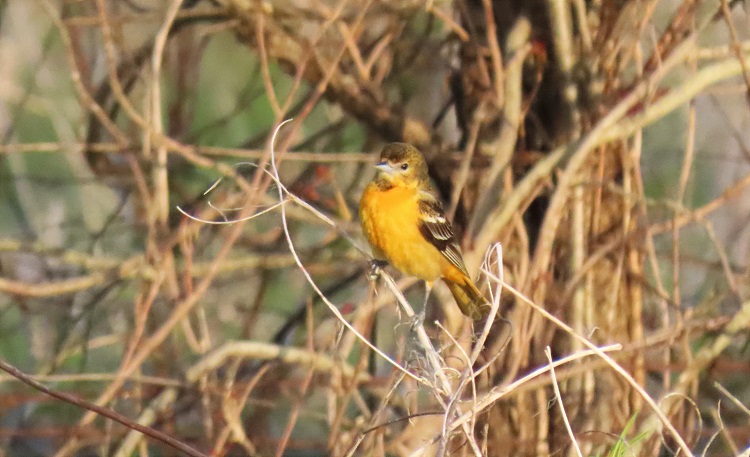
Female Baltimore Oriole with gray head – Lisa Hutchings 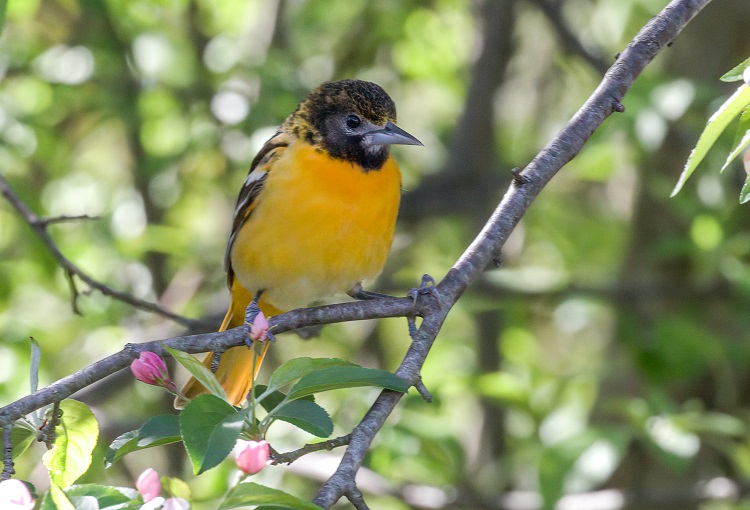
Female Baltimore Oriole with dark head – Dave Larson
When the female is ready to build her nest, she does it alone. The male may provide her with nesting material, but she weaves the nest. From start to finish, this will take her only a week (up to two if the weather is bad). She then lays a clutch of 3-7 eggs and incubates them for about 14 days. Once they hatch, both parents take part in feeding the nestlings over the next 14 days, at which point the fledglings will leave the nest. The parents will continue to care for the fledglings as they learn to hunt and feed on their own.
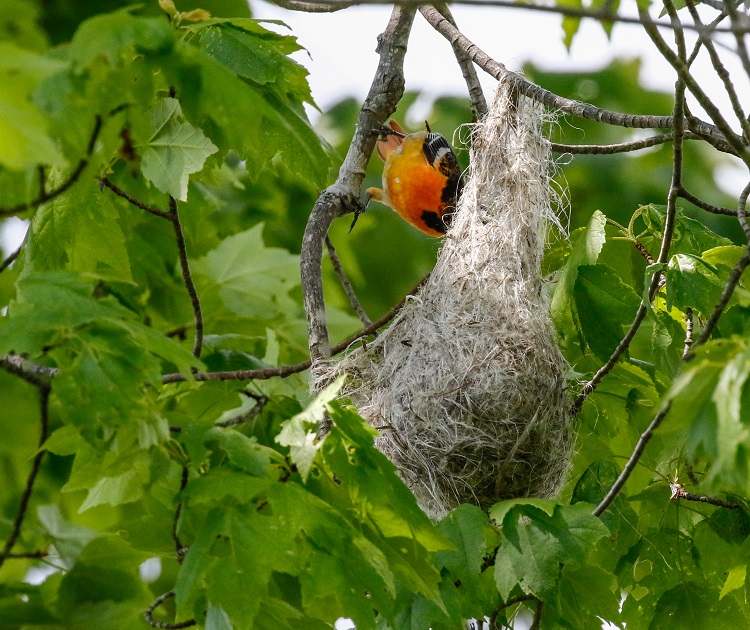

What can you do for orioles? Plant native fruiting and nectar-rich plants! Plants such as crabapple trees, cherry trees, mulberry bushes, and raspberry bushes will keep orioles coming back to your yard year after year. Need some extra color? Go for orange to help draw the orioles into your yard. Once they realize there’s food, they’ll likely stick around. If you want to use a feeder, try suet, mealworms, and nectar feeders to help supplement orioles’ diverse diet. Lastly, don’t use insecticides on your outdoor plants! Insecticides kill off the insects that orioles prey on, and in worst case scenarios could kill the birds if they consume contaminated insects or berries! Save yourself the work: let the orioles take care of pests for you!
A note on hygiene: Sugary foods, such as fruits and jellies, are a prime place for mold to grow. Make sure to only put out what can be consumed in a couple of days by your backyard birds and be sure to take down old fruit. Orioles, just like people, can become sick from ingesting certain kinds of mold.
Learning Tools from Mass Audubon
Learn all about Baltimore Orioles from Mass Audubon.
Study data about the Baltimore Oriole population with the Breeding Bird Atlas.
Looking for More Resources and Activities?
Learn more about identification and behavior with the All About Birds website.
Observe Baltimore Orioles at a live feeder cam.
Observe a Baltimore Oriole at its nest, feeding its young. Listen carefully for the birdsong in the video.
Build a DIY bird feeder for orioles.
Sketch an oriole and learn about their coloration.
Create this Baltimore Oriole craft with paper!
Admire and read about the beautiful artwork of Baltimore Orioles by John J. Audubon.
View this slow motion video showing the release of a Baltimore Oriole at Joppa Flats Bird Banding Station.
Submissions
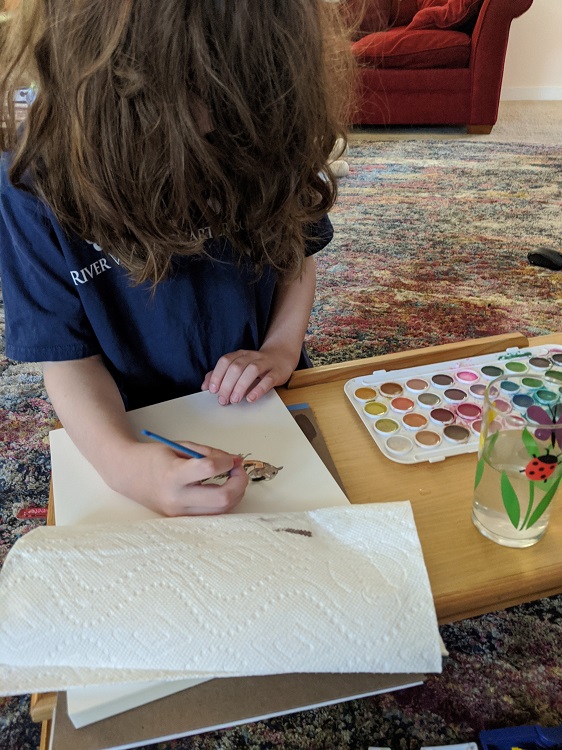
Hadley, age 8, working on oriole art 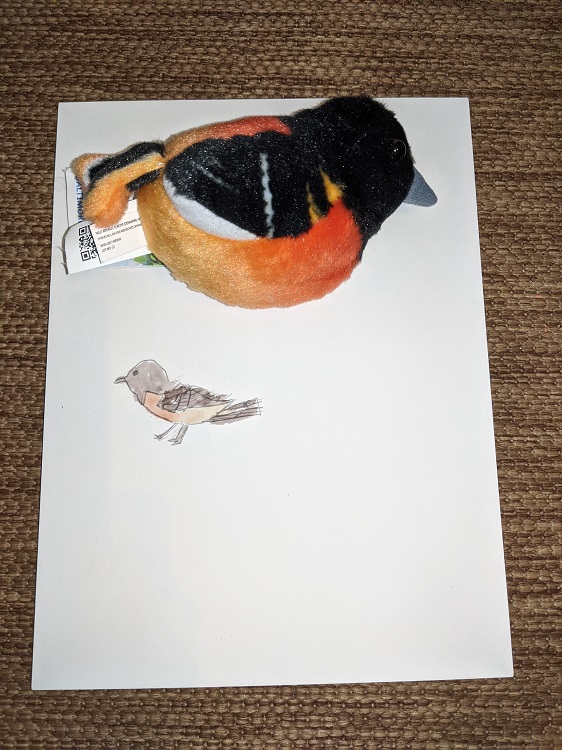
Oriole artwork by Hadley 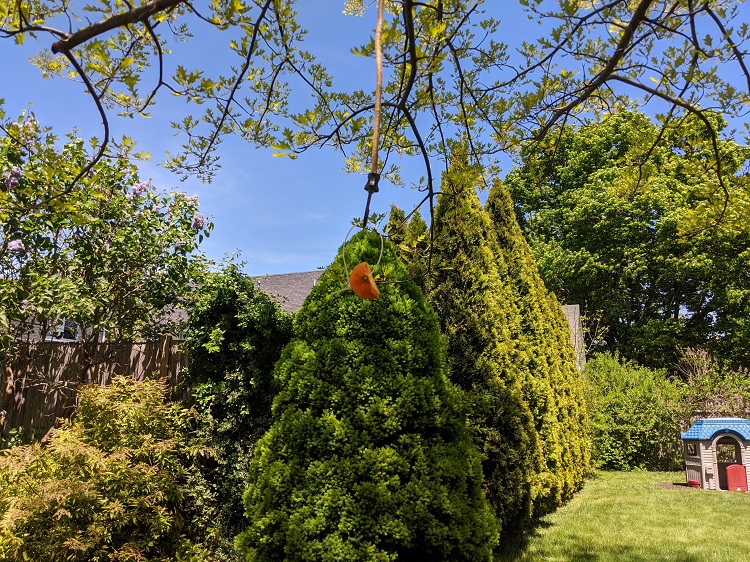
Orange feeder put up by Hadley and family
“One landed on my balcony for a little break the other day. I didn’t have my phone handy for a photo which was nice because I just enjoyed the visit. They’re so exotic.”
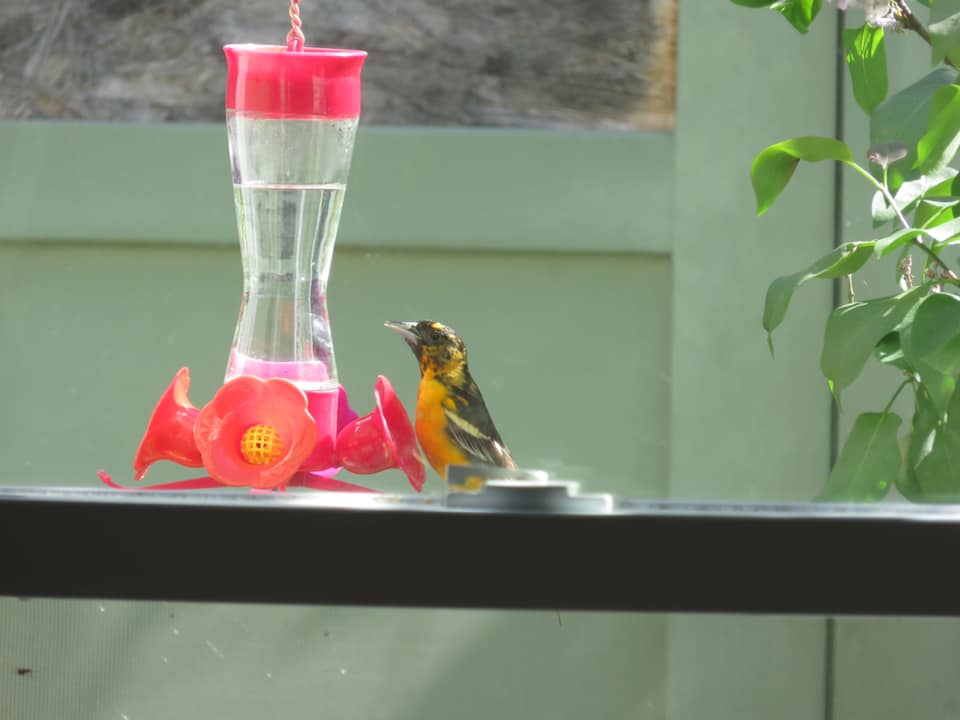
“I’ve seen lots of them at my house this year – going in 4 weeks and I’m still seeing them. They love their oranges.”
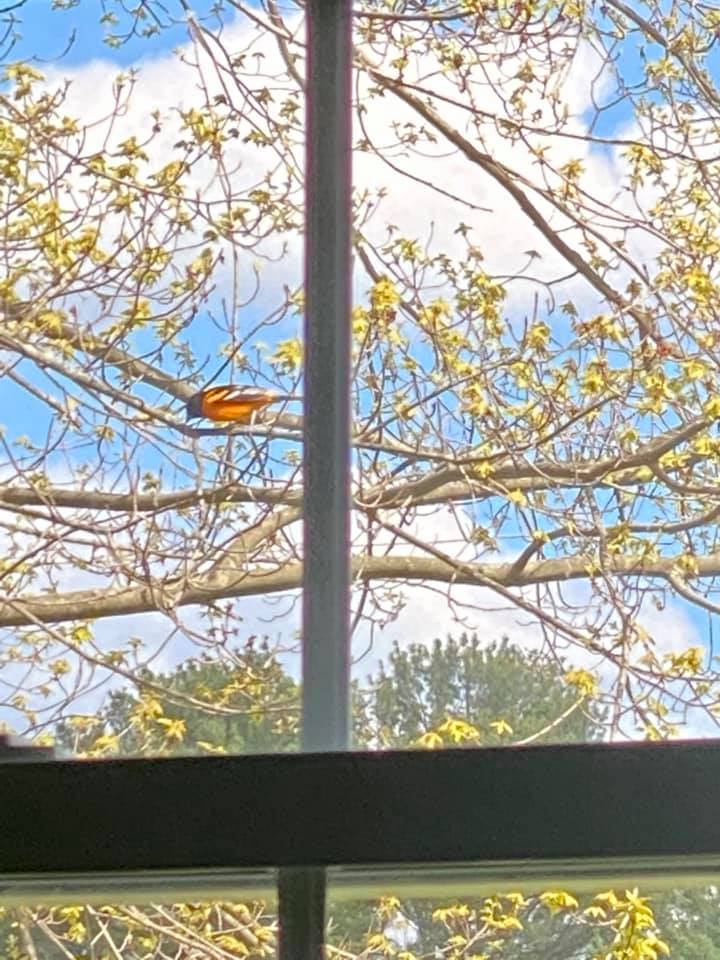
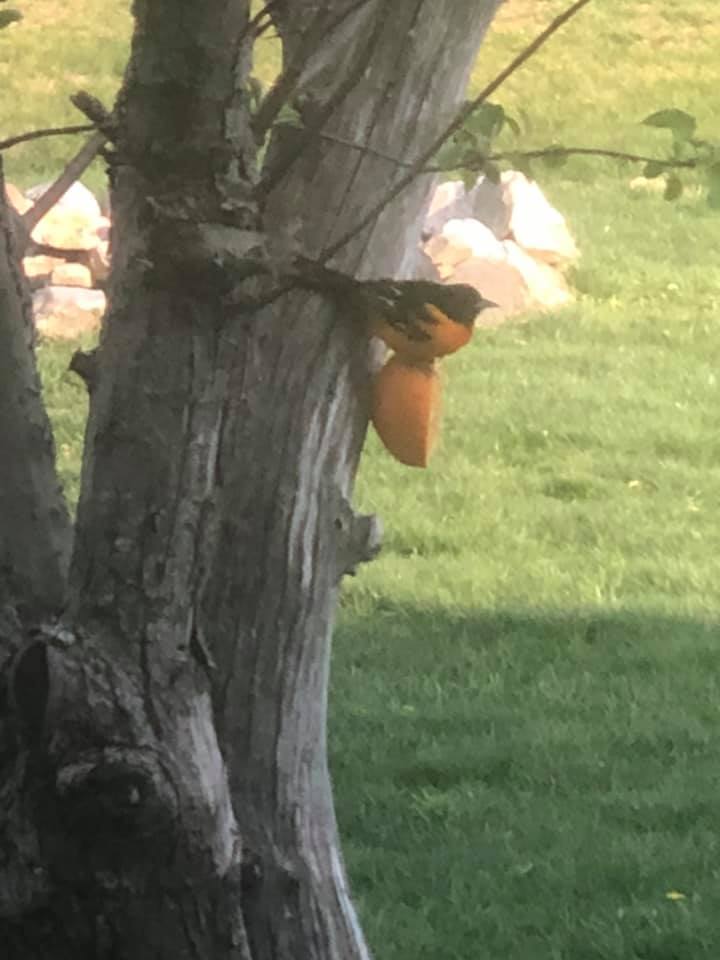
What’s Next?
What would you like to learn about from your backyard? Let us know in the comments.
Stay tuned for the next Critter Card coming out on Monday, by email and Facebook.
Connect With Us
Would you like to be added to Lisa Hutchings’ VIP email list? Receive special resources such as nature slideshows and educational tools for at-home learning. Send an email to [email protected] requesting to be added to the VIP list.

